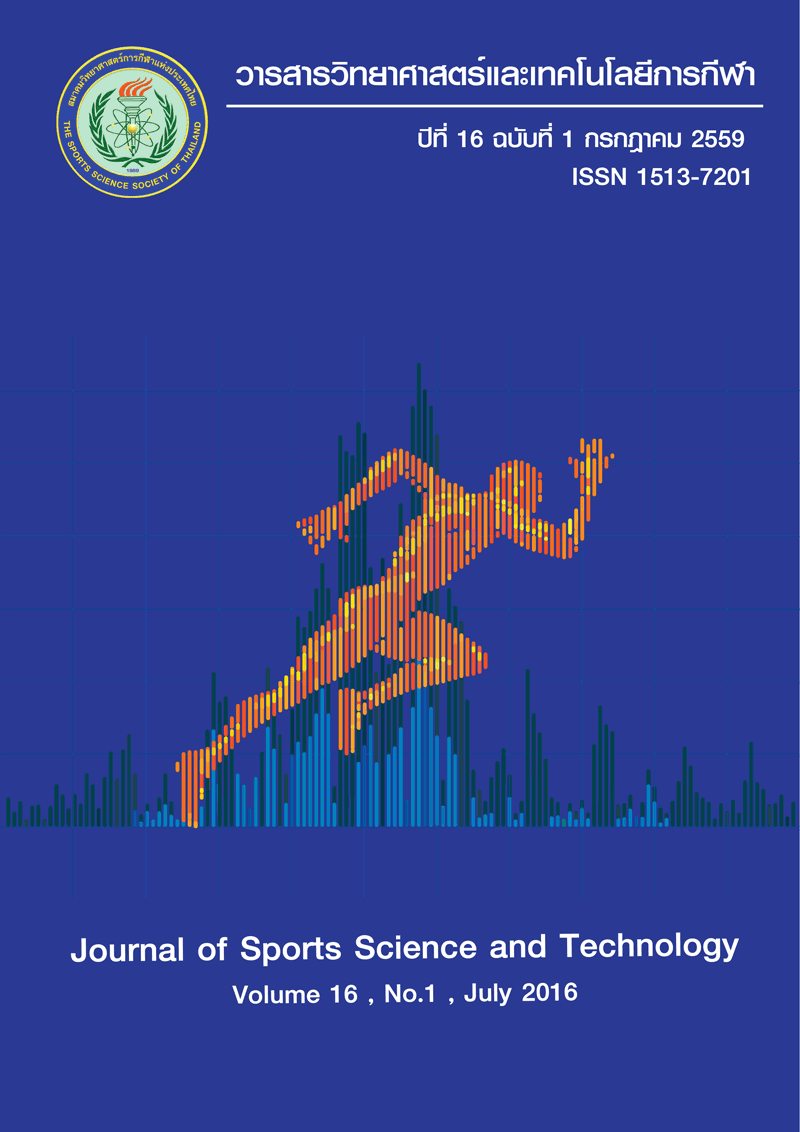COMPARISON OF 3-D UPPER LIMB KINEMATICS BETWEEN SIMPLE AND CLUSTER MARKER SETS DURING TENNIS SERVE
Abstract
The objective of this study was to compare two biomechanical models; anatomical system technique(ANAT) and a calibrated anatomical system technique (CAST) during tennis serve. We chose 3 events of
elbow and shoulder angles to compare. The result showed significant difference in 6 pairs of shoulder and
elbow joint which were ROM of elbow flexion-extension, shoulder internal-external velocity during impact
frame, elbow flexion-extension angle during racket low point, shoulder flexion-extension angle during racket
low point, shoulder flexion-extension angle during impact and shoulder adduction-abduction angle during
impact in tennis serves. From the previous research, the shoulder internal-external rotation velocity produced
the greatest contribution (54%) to the racket head velocity. The velocity transmitted from shoulder to elbow
and wrist affected racket head velocity during the tennis serve. From these results, the comparisons of 18
variables from ANAT and CAST models showed significant differences in 6 variables. Therefore this
information will be useful for researcher’s decision to choose the appropriate model for further research.
(Journal of Sports Science and Technology 2016; 16(1) : 11-19 )
Downloads
Published
2016-07-26
How to Cite
1.
Sukosol W, HIRANRAT S, LIMROONGREUNGRAT W, WIDJAJA W. COMPARISON OF 3-D UPPER LIMB KINEMATICS BETWEEN SIMPLE AND CLUSTER MARKER SETS DURING TENNIS SERVE. J Sports Sci Technol [internet]. 2016 Jul. 26 [cited 2025 Dec. 11];16(1):11-9. available from: https://he01.tci-thaijo.org/index.php/JSST/article/view/53935
Issue
Section
Sports Biomechanics






